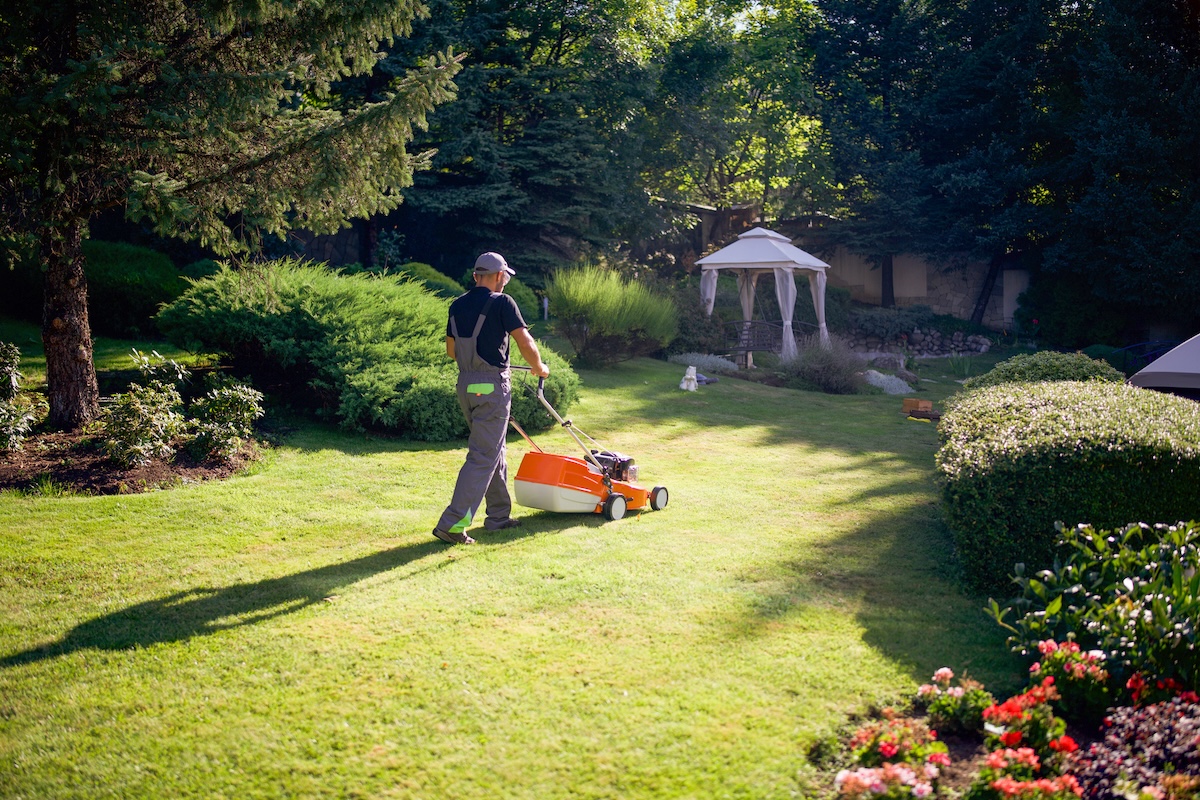

We may earn revenue from the products available on this page and participate in affiliate programs. Learn More ›
Home Advice You Can Trust
Tips, tricks & ideas for a better home and yard, delivered to your inbox daily.
By signing up you agree to our Terms of Service and Privacy Policy.
A great-looking lawn doesn’t just happen overnight. It takes lots of care to keep your grass healthy and green. Luckily, the secrets to fabulous grass are available to anyone who wants to learn how to master their own backyard. You can learn how to control weeds, when and how much to fertilize, and the importance of keeping the soil beneath your turf healthy, and get counsel from professionals who know how to keep turf healthy and lush.

An Easier Solution for Lawn Care
Bob Vila has partnered with TruGreen to help your yard get tailored nutrients and care—exactly the attention it needs to look its best this season.Get Started
Cut grass to the optimal height.

Photo: Maria Korneeva via Getty Images
It might seem like a good idea to give your lawn a crew cut so you can mow less frequently, but doing so can. Never cut more than one-third of the length of the grass blade at any one time or you can stress your turf, leaving it more vulnerable to blight and disease. A little extra height during the hottest and sunniest months of the year can also help protect your grass from scorching. Determine the appropriate lawn height for your grass type, and maintain it throughout the season.
Reuse clippings as mulch.
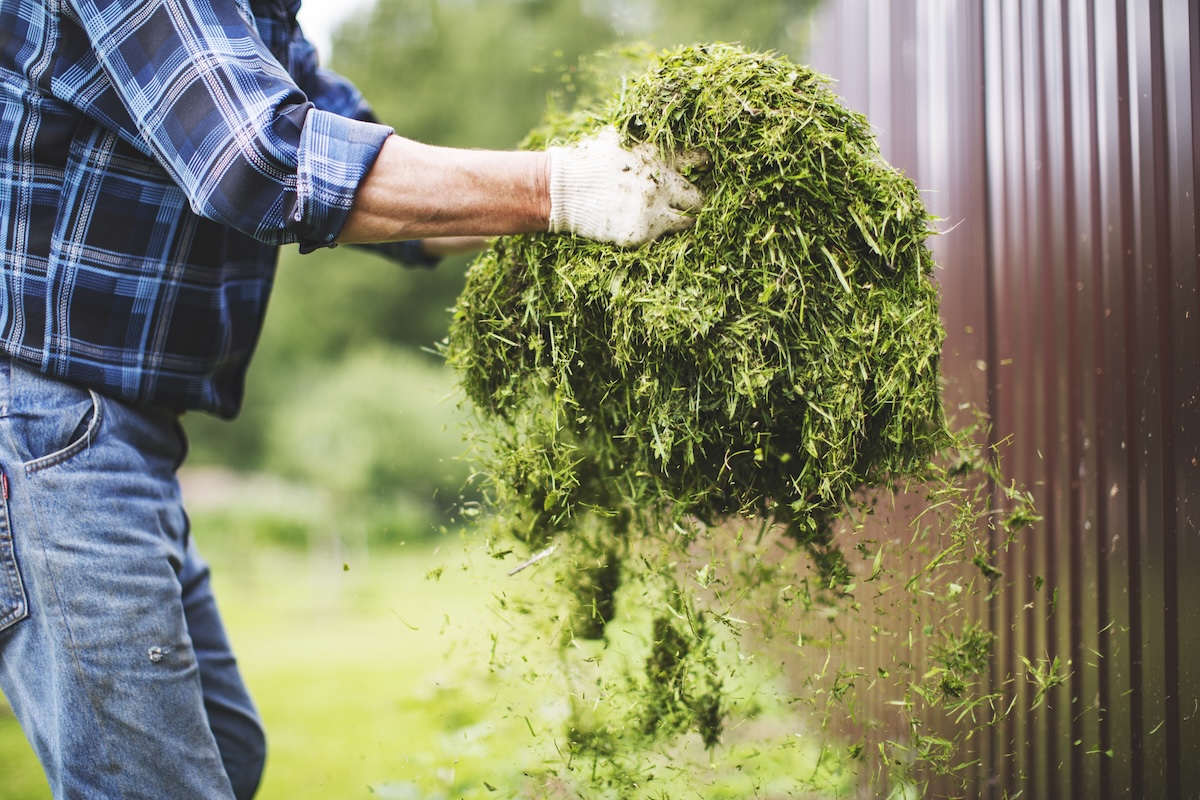
Photo: JulPo via Getty Images
Skip bagging your grass clippings. Instead, mulch them into your lawn, where they’ll decompose, adding nutrients into the soil. Word to the wise: If your lawn is full of weeds, then your clippings will most likely be full of weed seeds. If you don’t want to sprout new weeds, stick to bagging your clippings until you get your weed problem under control. Once the lawn is healthy, choose a mulching lawn mower the next time you replace your worn mower. It can shred the clippings as you go and return them to the surface.
Fertilize to add nutrients.
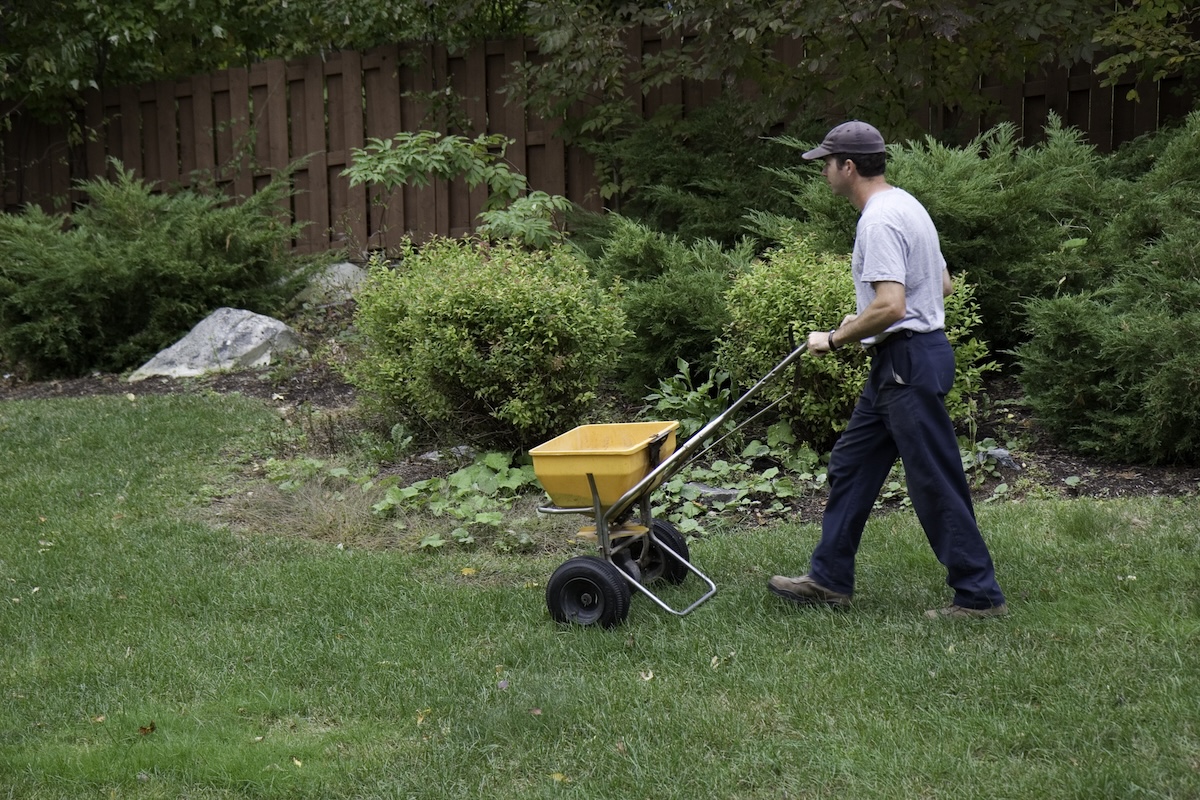
Photo: Jamie VanBuskirk via Getty Images
Usually, your soil cannot provide all the nutrients your turfgrass needs throughout the entire growing season. That’s why it’s important to fertilize your lawn wheen it needs it. The type of grass you are growing dictates when you should fertilize and the type of fertilizer you should use. Fertilize warm-season grasses as they come out of dormancy in the spring. Feed cool-season grasses more heavily in the fall and lightly in early spring. Fertilizing appropriately keeps grass healthy and helps it better resist pests and diseases.
Keep weeds away.

Photo: IB WESTERSOE via Getty Images
Weeds can compete with your turfgrass for resources. Although a few weeds are to be expected, weed invasions are more likely to show up in unhealthy turf, so the best strategy for weed prevention is a combination of a lawn assessment and consistent lawn care. In between scheduled maintenance, stay on top of pulling weeds that sprout in the lawn. Remember, it’s much easier to pull out one weed than dozens of them. When hand-pulling becomes too arduous, try an all-natural weed-killing solution, such as vinegar or boiling water, before contemplating any chemical treatments.
Get a pro’s eyes on your turf.

Photo: TruGreen
Providing the best care for your lawn begins with understanding what it needs. Unfortunately, this can require a bit of guesswork and experimentation. You can save yourself from making potentially costly mistakes by getting a professional assessment. TruGreen’s lawn care plans, which range from TruBasic to TruPro in terms of scope of services, all include a professional lawn care assessment, a tailored lawn plan, weed control, and fertilizer.
Once you have a plan in place to improve your lawn’s health and appearance, you’ll have a better idea of how to spend your time and money more wisely. You may even opt for services such as insect control, aeration, and soil enhancement.
Choose the right mower.

Photo: Aja Koska via Getty Images
Using the right mower for your yard will make it much easier to care for the lawn. Consider the size of your property when selecting a lawn mower: A push mower is a great option for most standard-size lawns. But when you have an acre or more of grass to cut, the task really requires a riding lawn mower. You also have to factor in the type of grass—the thicker the grass, the higher the horsepower you’ll need.
Water deeply and less often.
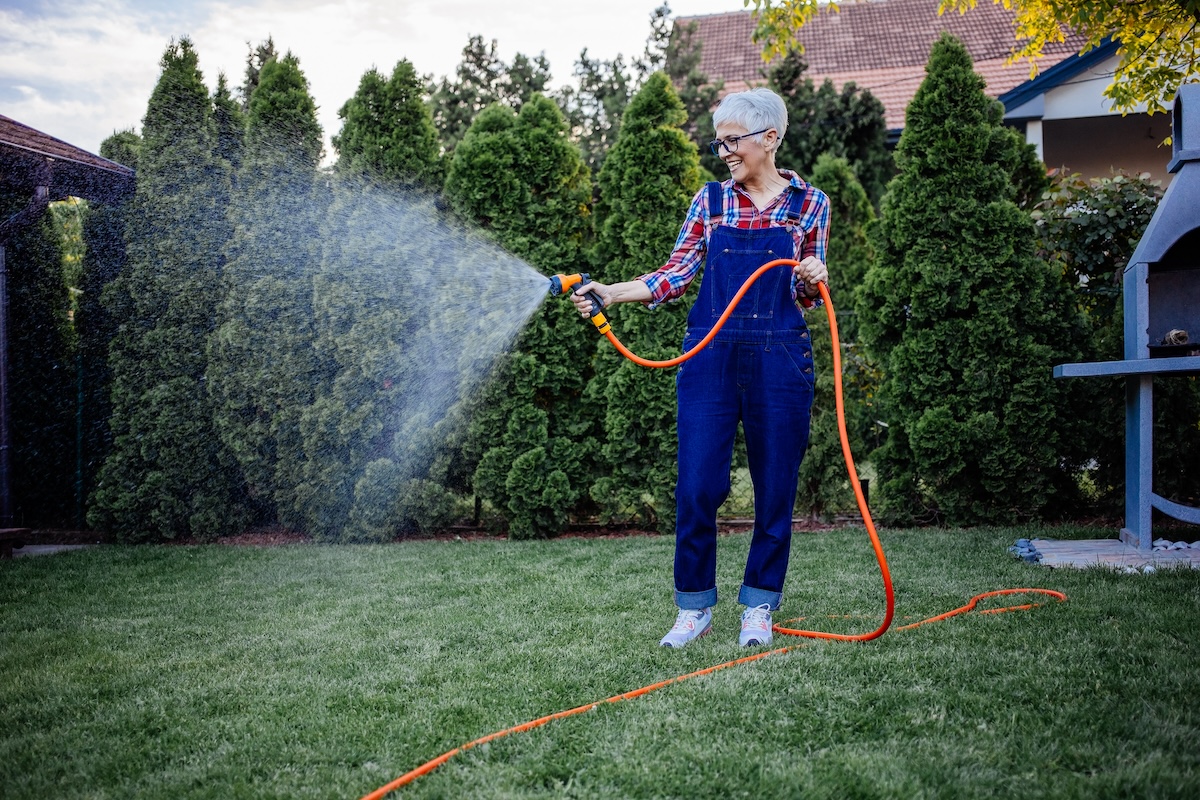
Photo: Nikola Ilic via Getty Images
Unless it’s a particularly dry summer, avoid watering your grass daily. Frequent, shallow watering encourages shallow roots and ultimately weakens turfgrass. It’s best to water your grass deeply and less frequently. Occasional watering prompts the roots to grow deeper, giving your grass the strength it needs to weather hot conditions. If you’re unsure how long to irrigate the lawn to ensure deep growth, you can do some simple calculations based on the amount of water your sprinkler system puts out in an hour.
Aerate the lawn.
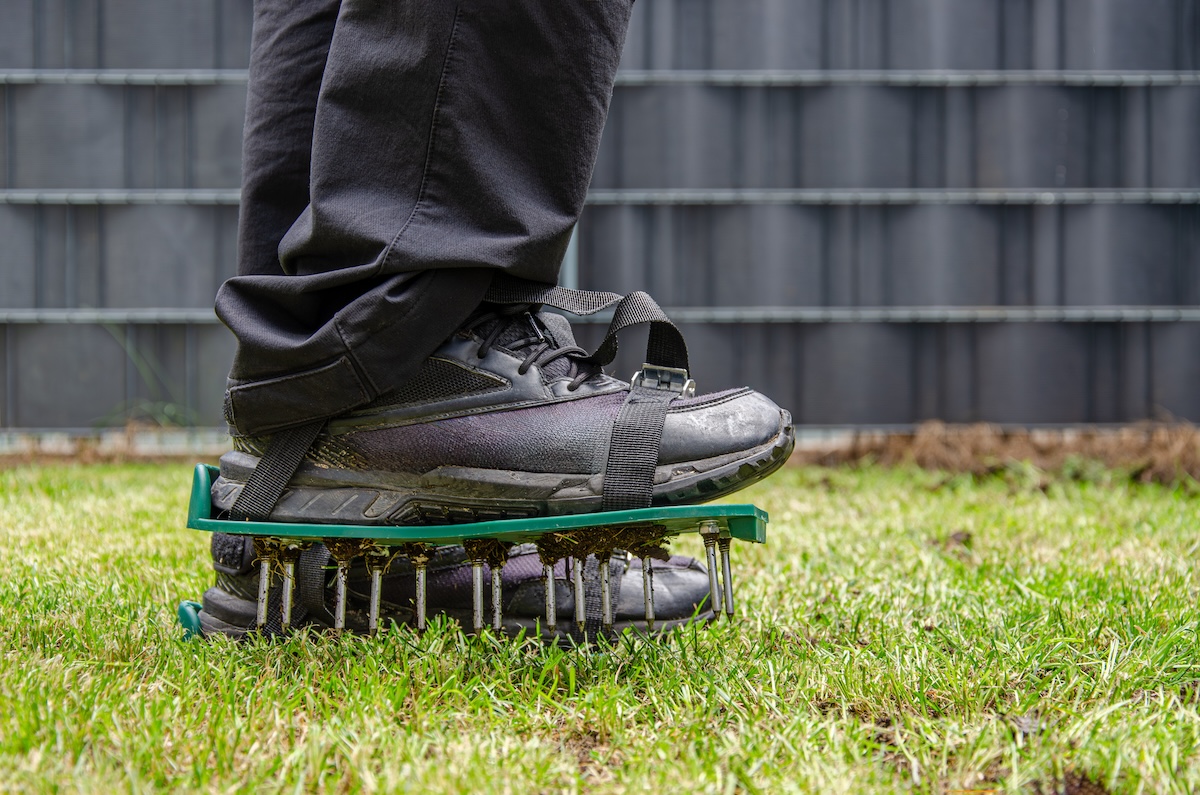
Photo: Nadja Abele / 500px via Getty Images
Of course, grass needs sun and water to thrive; it also needs air. That’s why it’s important to aerate your lawn if you notice that the soil has become compacted. The process involves punching holes a few inches deep, at a rate of about 20 to 40 holes per square foot of lawn. You can aerate your lawn with a push aerator, a gas-powered aerator (available for rent), a manual aerating tool, or you can splurge on professional lawn aeration.
Dethatch your lawn every few years as needed.
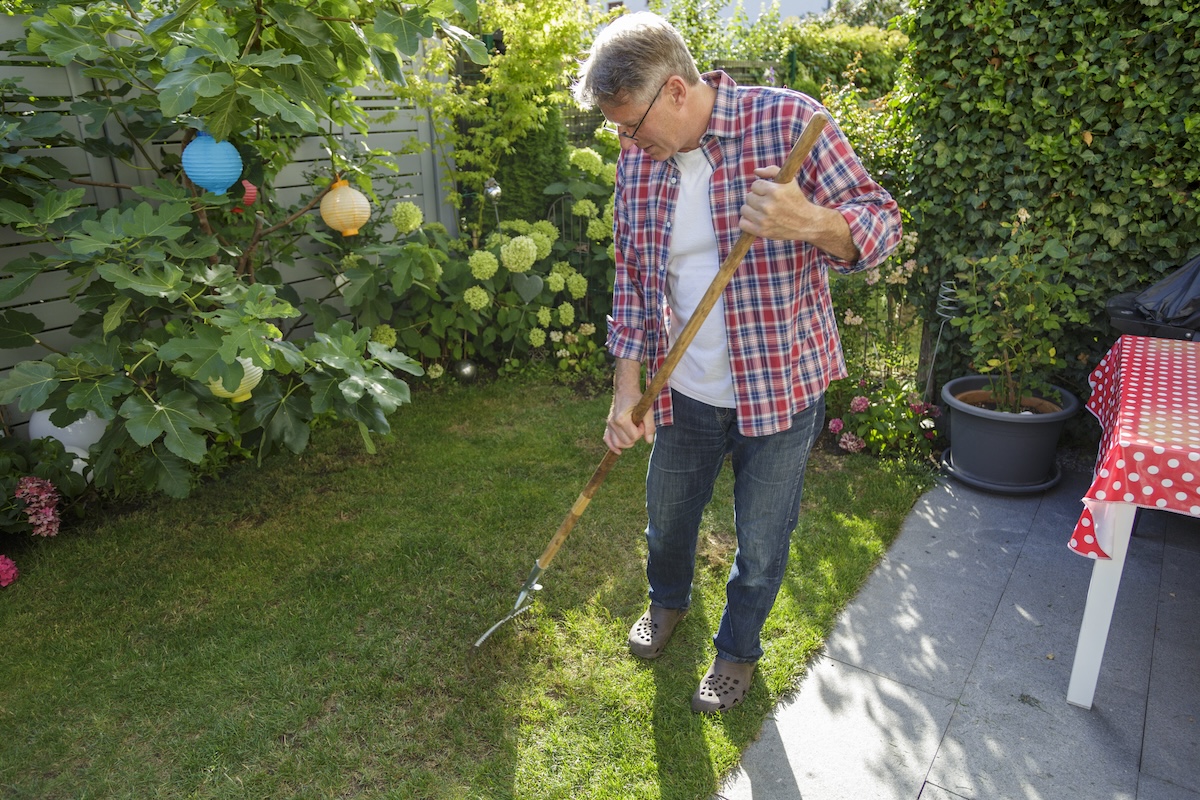
Photo: J.P. Nodier via Getty Images
Thatch is dead plant material that builds up between the grass blades and roots. A little is OK, even healthy. But too much thatch is a bad thing. If your lawn has a layer of thatch that’s more than ¾ inch thick, it’s time to dethatch. This can be done with a thatch rake (for smaller lawns), a power rake (for larger expanses), or a lawn dethatcher. Removing that layer of thatch will let water and air penetrate the soil, improving the health of your lawn.
Test your lawn’s soil.

Photo: FRAME STUDIO via Getty Images
Testing your soil every few years will arm you with information about its pH level and fertility. For a lawn to grow healthy, its ideal pH level is nearly neutral, or about 6.0 to 6.5. You can test soil pH and the presence of essential nutrients with a home soil test kit. If your soil is too alkaline—if it has a pH level greater than 7—add sulfate to make it more acidic; if it’s too acidic, add lime to reduce the acidity and bring it into balance.Lawn and garden soil that lacks nutrients like nitrogen can benefit from other additives, such as compost or fertilizer.
Mix up your mowing.

Photo: Olga Rolenko via Getty Images
Though consistency in how often you mow helps keep your grass healthy, don’t mow your grass the same way every time. Mix up the direction you mow to help reduce soil compaction, encourage upright growth of grass blades, and help you get a more uniform cut. If possible, mow at right angles to the most recent mowing pattern, alternating as you can.
Keep your mower blades sharp.

Photo: iStock
A mistake many homeowners make that can ruin a lawn is mowing with dull blades. A dull blade will rip the top of the grass instead of cutting it, lengthening the healing process of the grass and leaving your lawn looking ragged in the process. Be sure to watch for signs of dull blades like ragged cuts or uneven height, and keep your mower blades sharp.
Seed lawns at the right time.

Photo: AleksandarNakic via Getty Images
Every lawn needs occasional reseeding or overseeding, whether to fill in bare patches or thicken an existing lawn. For most varieties, seeding is more successful in early spring, though growth may be slow if the weather is cold. Fall is also an excellent time to plant grass seed. Autumn seeding allows young turfgrass to establish itself before winter dormancy so they’ll have a head start when spring arrives.
Add compost to keep soil healthy.
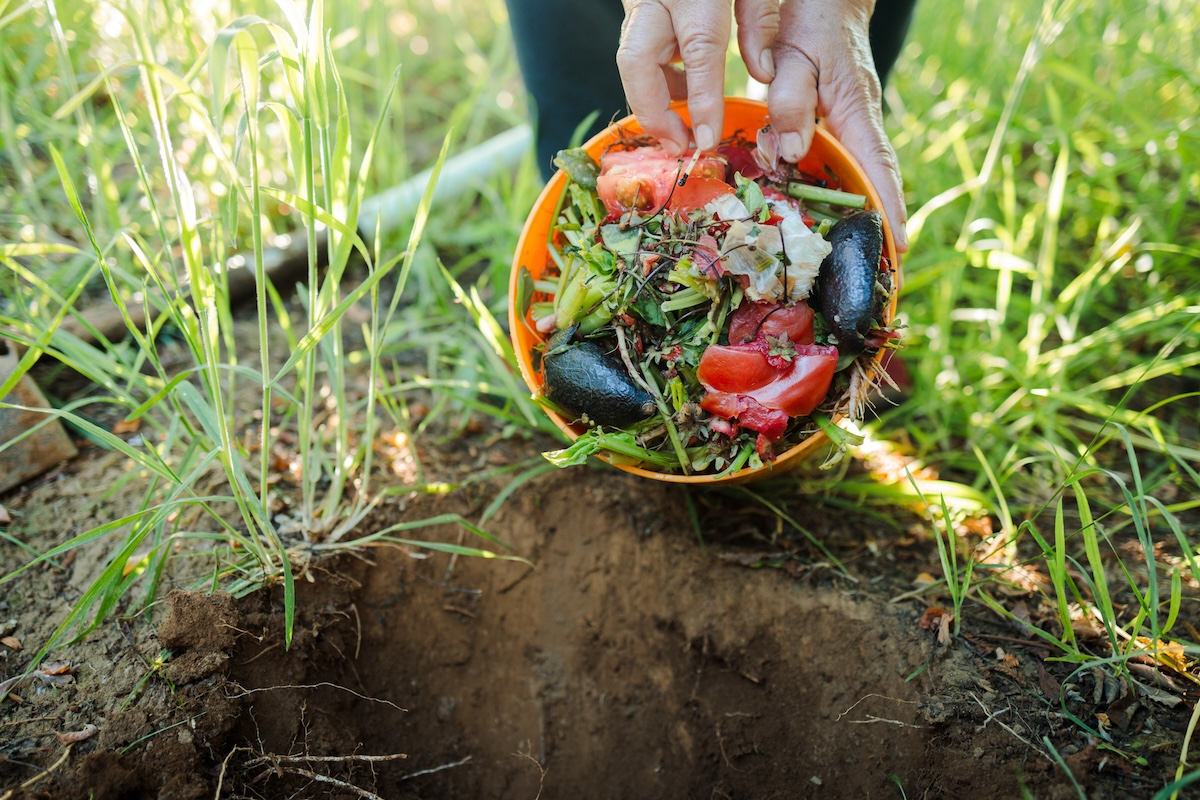
Photo: Patricio Nahuelhual via Getty Images
Replace some of your lawn soil’s essential nutrients by adding a thin layer of compost at the start and end of each growing season. Apply the compost using a spreader or work from a wheelbarrow, distributing the compost in several small piles and then spreading it lightly with a rake. This natural option will add organic matter back into the soil for healthier grass. Topdressing with compost in fall gives it the entire winter to break down and integrate into the soil. Add another thin layer of compost that’s free of rocks and debris in spring to top up nutrients and give grass a gentle boost.
Pay attention to the weather.
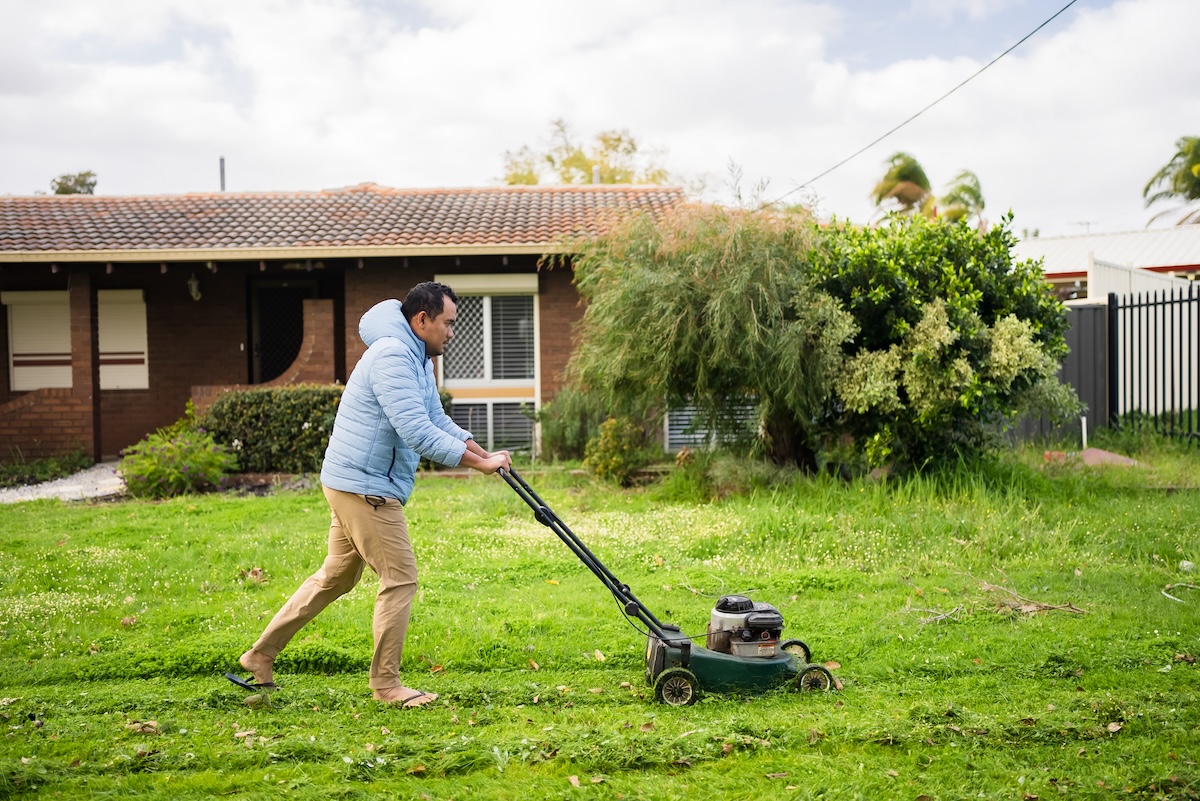
Photo: Rudi Suardi via Getty Images
Having a weekly routine for chores is an excellent way to maintain your home, but when it comes to lawn care, you can’t always be so rigid. It’s important to pay attention to the weather so you can adjust your mowing and watering schedule accordingly. There’s no reason to water the lawn if it has recently rained, and you certainly don’t want to mow if the grass is wet.
You should also mow less frequently if your area is going through a drought since the grass grows more slowly. Thanks to smart irrigation systems and the popularity of home assistants like Alexa, which can offer advice on when to mow and water the lawn, there’s no need to waste water or squander your time and energy on mowing when it’s not necessary.
Set an irrigation timer.
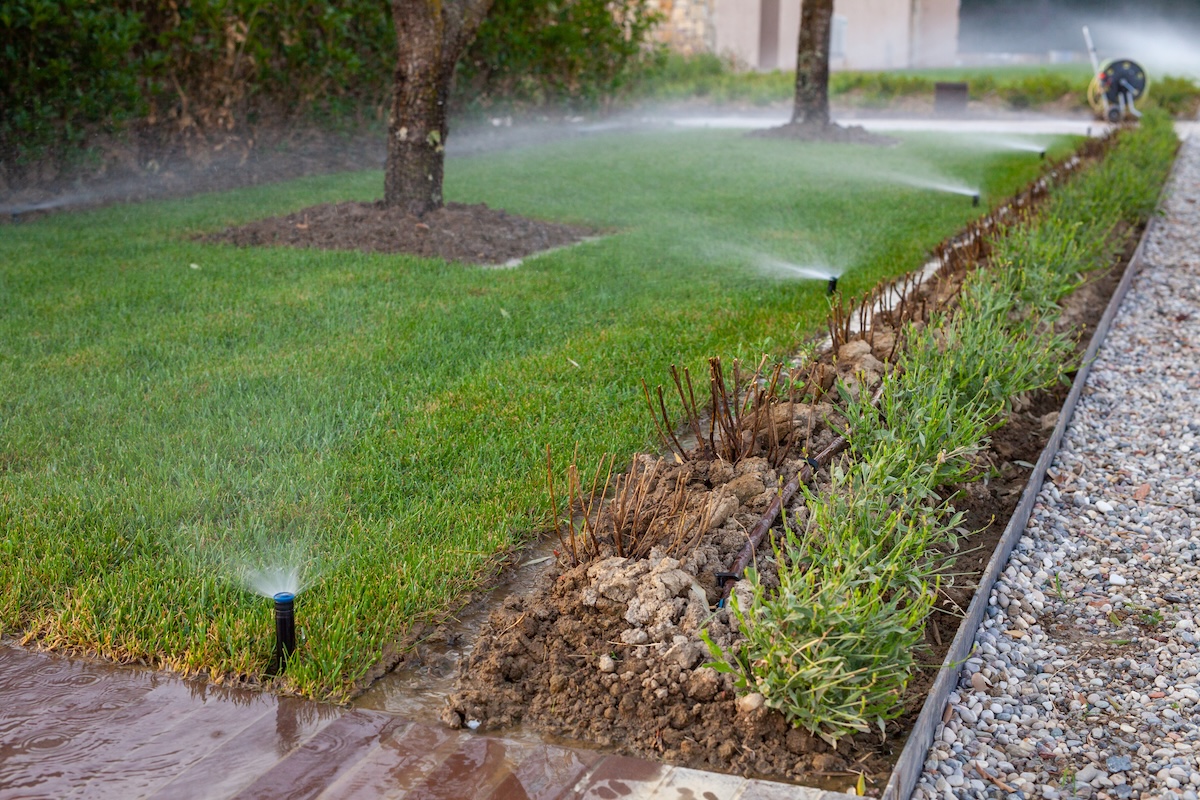
Photo: Kirill Rudenko via Getty Images
You know watering the lawn is important, but it’s also yet another chore you have to remember or track. Setting a timer can at least ensure that you’re not giving the lawn too much (or too little) water.
For a low-tech option, set an alarm on your phone to remind you to water, and then set a timer to remind you when it’s time to move the sprinkler or shut off the water. Another option is a hose timer, which attaches to the garden hose or spigot and lets you schedule the sprinklers to turn on and off automatically.
If you have an irrigation system, upgrade to a smart timer and program the system to water the appropriate amount and frequency.
Get rid of grubs.
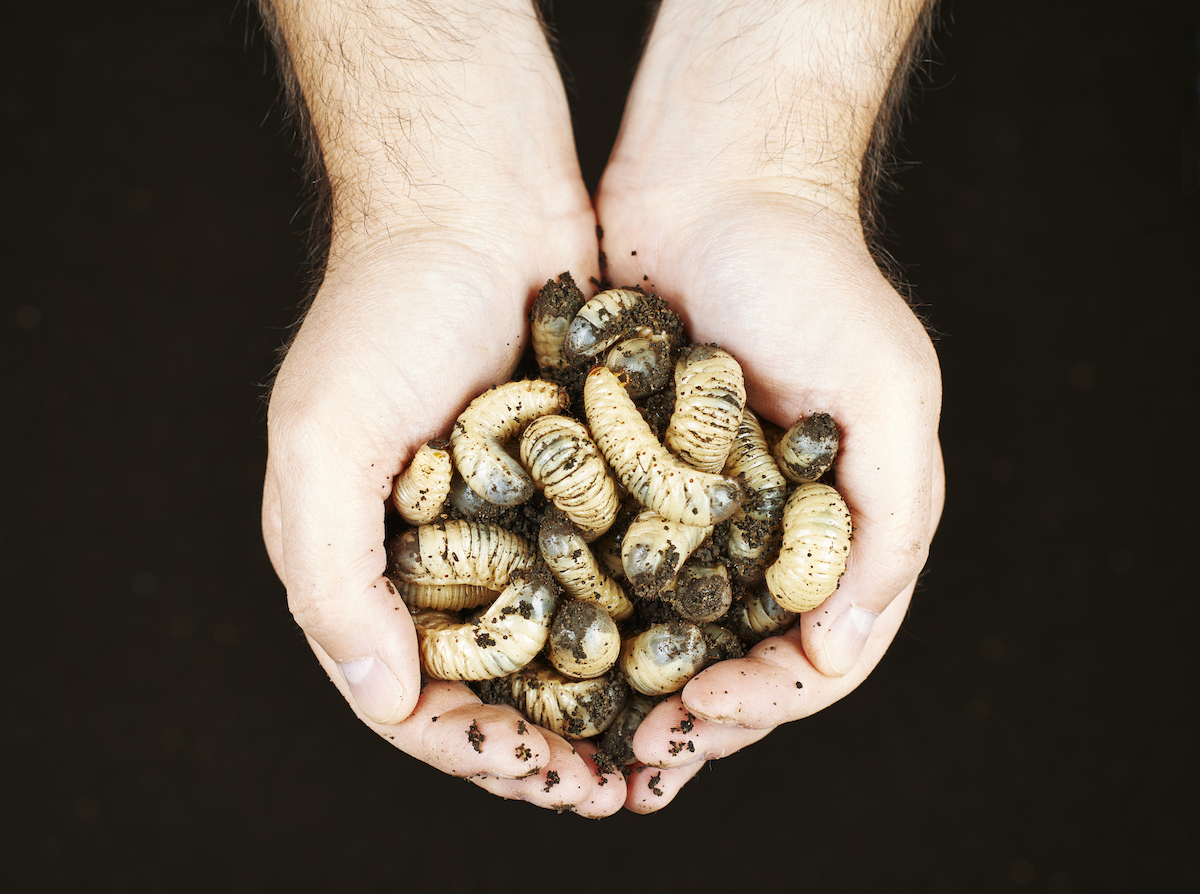
Photo: Getty Images
Grubs, the larvae of various beetles, are a natural part of the landscape. Every lawn will have a few, but too many and you’ll begin to notice brown patches. A few grubs usually don’t cause a problem, but browning of grass might be a sign that it’s time to get rid of the grubs so they don’t destroy grass roots. To avoid an infestation, introduce nematodes or apply milky spore, a treatment that kills the grubs of Japanese beetles.
Leave some leaf debris.

Photo: Sladic via Getty Images
Come fall, many of us are inclined to rake up the leaves to keep the yard looking tidy, but that’s not necessarily the best choice. While a heavy coat of leaves can smother the lawn, a moderate amount of leaves can be used as mulch. Rather than raking, use a leaf mulcher or run the mower over the leaves until they’re chopped up. The bits and pieces will provide beneficial nutrients to the lawn as they break down.

Our Best Advice for Beginner Gardeners
We’ll help you set up your first garden—whether that’s a few pots on your patio, a raised bed, or an in-ground plot out back—and select the right plants for your soil and region.